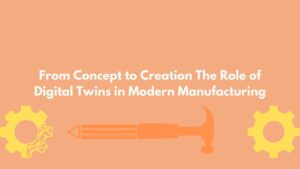Introduction
3D printing, also known as additive manufacturing, is revolutionizing the manufacturing industry. Initially used primarily for prototyping, 3D printing technology has advanced to the point where it can be used for full-scale production. This blog explores the benefits of 3D printing, its applications in manufacturing, and how businesses can leverage this technology to enhance their operations.
The Evolution of 3D Printing
3D printing involves creating three-dimensional objects from a digital file by layering materials. Over the years, the technology has evolved from a prototyping tool to a versatile manufacturing solution capable of producing complex and high-quality parts.
Benefits of 3D Printing in Manufacturing
- Reduced Lead Times: 3D printing can significantly shorten the time from design to production, allowing for faster product development cycles.
- Cost Efficiency: By eliminating the need for molds and reducing material waste, 3D printing can lower production costs.
- Design Flexibility: 3D printing enables the creation of intricate and complex designs that would be difficult or impossible with traditional manufacturing methods.
- Customization: Manufacturers can produce customized products on-demand without the need for retooling.
- Sustainability: Additive manufacturing produces less waste compared to subtractive methods, contributing to more sustainable production practices.
Applications of 3D Printing in Manufacturing
- Rapid Prototyping: Quickly create prototypes to test and refine product designs.
- Tooling and Fixtures: Produce custom tools and fixtures for the production line.
- End-Use Parts: Manufacture final parts for industries such as aerospace, automotive, and healthcare.
- Spare Parts: On-demand production of spare parts reduces inventory costs and lead times.
- Mass Customization: Produce customized products tailored to individual customer needs.
Implementing 3D Printing in Manufacturing
- Assess Needs: Identify areas where 3D printing can add the most value to your production process.
- Invest in Technology: Choose the right 3D printing technology and materials for your specific applications.
- Train Employees: Ensure your team is skilled in using 3D printing technology and understanding its capabilities.
- Start Small: Begin with pilot projects to test and refine your 3D printing processes.
- Integrate with Existing Systems: Seamlessly incorporate 3D printing into your current production workflows.
Case Study: 3D Printing Success at [Company Name]
[Company Name], a manufacturer of industrial machinery, successfully integrated 3D printing into their operations with impressive results:
- 50% Reduction in Prototyping Time: The use of 3D printing cut prototyping time in half, accelerating product development.
- Cost Savings: Eliminating the need for expensive molds led to significant cost reductions.
- Improved Product Design: The flexibility of 3D printing allowed for more innovative and complex product designs.
Conclusion
3D printing is transforming the manufacturing industry by offering faster, more cost-effective, and flexible production solutions. By adopting 3D printing technology, manufacturers can enhance their product development, reduce costs, and create more customized and innovative products. As the technology continues to evolve, its impact on manufacturing will only grow, driving the industry towards greater efficiency and creativity.









